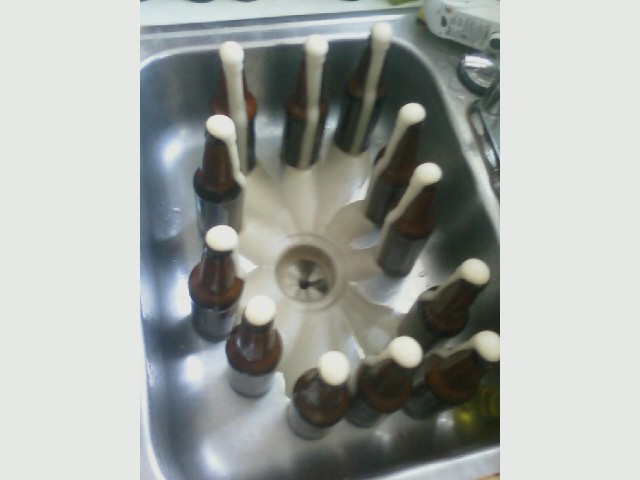azazel1024
Well-Known Member
So I can't really think of an appropriate place to put this one, but I have a question on gushers.
A couple of times I've brewed a batch the beer was massively over carbed (never had bottle bombs, knock on wood). I've more or less fixed that issue with too much bottling sugar and/or fermentation not entirely finished.
However, a couple of batches I've made over the last couple of years have been gushers, but not obviously over carbonated. IE when opening the bottles there was, what sounded like, a normal amount of CO2 release. However, let the bottle sit there or pour it and all of the CO2 starts coming out of solution, and volcano.
What the heck?
Any ideas what could cause this. It is often an entire batch, but sometimes it is just a couple of bottles of a batch. As I said, it doesn't actually seem over carbonated when poping the cap (at least the headspace isn't under a bunch of pressure) and it also doesn't happen very often (1 of the last 8 batches I've made has had this happen, but seems like it may be the entire batch as the last 3 bottles have all done it). I guess it is possible fermentation wasn't really complete on this one (dopplebock). I ice bathed it for 3 days before I went on vacation and turned the thermostat down to 58F (56F on the slab). Came home 10 days later, turned the thermostat up and it sat for probably 5 days at 64F before I finished converting my minifridge to a fermentation chamber and then laggered it for 2 weeks at 40F before bottling.
Gravity seemed stable when I had checked it and it had reached the gravity range I had exepected it to.
A couple of times I've brewed a batch the beer was massively over carbed (never had bottle bombs, knock on wood). I've more or less fixed that issue with too much bottling sugar and/or fermentation not entirely finished.
However, a couple of batches I've made over the last couple of years have been gushers, but not obviously over carbonated. IE when opening the bottles there was, what sounded like, a normal amount of CO2 release. However, let the bottle sit there or pour it and all of the CO2 starts coming out of solution, and volcano.
What the heck?
Any ideas what could cause this. It is often an entire batch, but sometimes it is just a couple of bottles of a batch. As I said, it doesn't actually seem over carbonated when poping the cap (at least the headspace isn't under a bunch of pressure) and it also doesn't happen very often (1 of the last 8 batches I've made has had this happen, but seems like it may be the entire batch as the last 3 bottles have all done it). I guess it is possible fermentation wasn't really complete on this one (dopplebock). I ice bathed it for 3 days before I went on vacation and turned the thermostat down to 58F (56F on the slab). Came home 10 days later, turned the thermostat up and it sat for probably 5 days at 64F before I finished converting my minifridge to a fermentation chamber and then laggered it for 2 weeks at 40F before bottling.
Gravity seemed stable when I had checked it and it had reached the gravity range I had exepected it to.



